
Across millennia, few figures have commanded as much enduring reverence, theological discussion, and cultural influence as Mary, the mother of Jesus. From the dusty pathways of first-century Nazareth to the gilded altars of grand cathedrals and the sacred verses of global scriptures, her presence resonates profoundly. She stands as a foundational pillar in Christianity, a revered figure in Islam, and is acknowledged in other faiths, testifying to a legacy that transcends mere historical accounts to touch the very core of human spirituality and belief.
This in-depth exploration seeks to meticulously unpack the multifaceted identity of Mary, drawing exclusively from the provided historical and religious contexts. We delve into her biblical narratives, the foundational doctrines that define her role in various Christian traditions, and the distinct reverence accorded to her in other major world religions. Our journey will illuminate the depth of her impact, the nuanced interpretations of her life, and the enduring devotion she inspires.
The following sections meticulously trace Mary’s journey, from her earthly origins as a Jewish woman to her elevated status as the Theotokos, the Mother of God, examining the pivotal moments and theological tenets that have shaped her unparalleled significance. By carefully sifting through the layers of scripture, tradition, and dogma, we aim to present a comprehensive portrait of a figure whose story continues to captivate and inspire millions worldwide.

1. **Mary’s Fundamental Identity: A First-Century Jewish Woman**Mary, a first-century Jewish woman, hailed from Nazareth, a town in Galilee. She is primarily known as the wife of Joseph and, crucially, the mother of Jesus. This foundational identity as a woman rooted in Jewish tradition of her time provides the initial historical context for understanding her life and the extraordinary events that unfolded around her. Her existence is not merely a theological construct but is anchored in the socio-cultural landscape of ancient Judea.
The synoptic Gospels—Matthew, Mark, and Luke—consistently name Mary as the mother of Jesus, positioning her within the earliest narratives of Christian scripture. These accounts, generally considered to date from around AD 66–90 for the synoptic Gospels and AD 90–110 for the Gospel of John, serve as primary sources of historical information about her, though they primarily focus on Jesus’ teachings and his apostles. Nevertheless, they provide clear references to Mary’s direct involvement in the seminal events of Jesus’ life.
Her family connections further underscore her place within the broader Jewish community. According to the writer of Luke, Mary was a relative of Elizabeth, who was the wife of the priest Zechariah of the priestly division of Abijah. Elizabeth herself was part of the lineage of Aaron, and thus of the Tribe of Levi. This connection suggests a familial link that intertwined her with the priestly heritage, while Joseph, her betrothed, was of the royal Davidic line and thus of the Tribe of Judah. This dual lineage, connecting both priestly and royal lines, is sometimes emphasized in efforts to reconcile the genealogies of Jesus presented in Matthew and Luke.
Her life in Nazareth, as a betrothed woman, followed Jewish customs of the era. Jewish girls were typically considered marriageable around the age of twelve years and six months, though actual ages varied. The betrothal itself was a formal and legally binding stage, preceding the actual marriage celebration by about a year, during which the bride legally belonged to the groom but did not yet live with him. These details paint a picture of Mary as a young woman deeply embedded in the customs and expectations of her contemporary Jewish society, setting the stage for the divine intervention that would irrevocably alter her destiny.

2. **The Annunciation: Gabriel’s Proclamation and Mary’s Fiat**The narrative of the Annunciation, primarily detailed in the Gospel of Luke, marks the definitive moment when Mary’s life was divinely reoriented. It describes the angel Gabriel appearing to Mary, who resided in “her own house” in Nazareth. Gabriel delivered the astonishing news that she was chosen by God to be the mother of the promised Messiah, a conception that would occur through the power of the Holy Spirit, without human intervention. This moment introduced the miraculous into the mundane, setting Mary apart in sacred history.
Mary’s initial reaction, as recorded, was one of “incredulity at the announcement.” Such a response was natural for a young woman presented with such an unprecedented and biologically impossible proposition. However, her subsequent declaration remains one of the most profound acts of faith recorded in scripture: “I am the handmaid of the Lord. Let it be done unto me according to your word.” This acceptance, often termed her *fiat*, signifies her profound obedience and willingness to participate in God’s plan, despite the personal and societal implications.
The extraordinary nature of Mary’s conception of Jesus presented an immediate challenge to her betrothal to Joseph. Joseph, upon discovering her pregnancy, planned to quietly divorce her, demonstrating his compassion and desire to protect her from public shame. However, his intentions were divinely intercepted. “An angel of the Lord” appeared to him in a dream, revealing that Mary’s conception was indeed by the Holy Spirit. Reassured, Joseph did not hesitate to take Mary as his wife, thereby formally completing the wedding rites and embracing his role as the earthly protector and foster-father of Jesus.
Following Gabriel’s announcement, Mary received another piece of extraordinary news: her relative Elizabeth, previously barren, was also miraculously pregnant. Mary “hurried to see Elizabeth,” who was living with her husband Zechariah in “the hill country…, [in] a city of Juda.” Upon Mary’s arrival and greeting, Elizabeth, filled with the Holy Spirit, proclaimed Mary “the mother of my Lord.” In response, Mary uttered words of praise that would become known as the Magnificat, a hymn of joy and prophecy that extols God’s mercy and power. This encounter further affirmed the divine work unfolding within her and reinforced her unique calling.
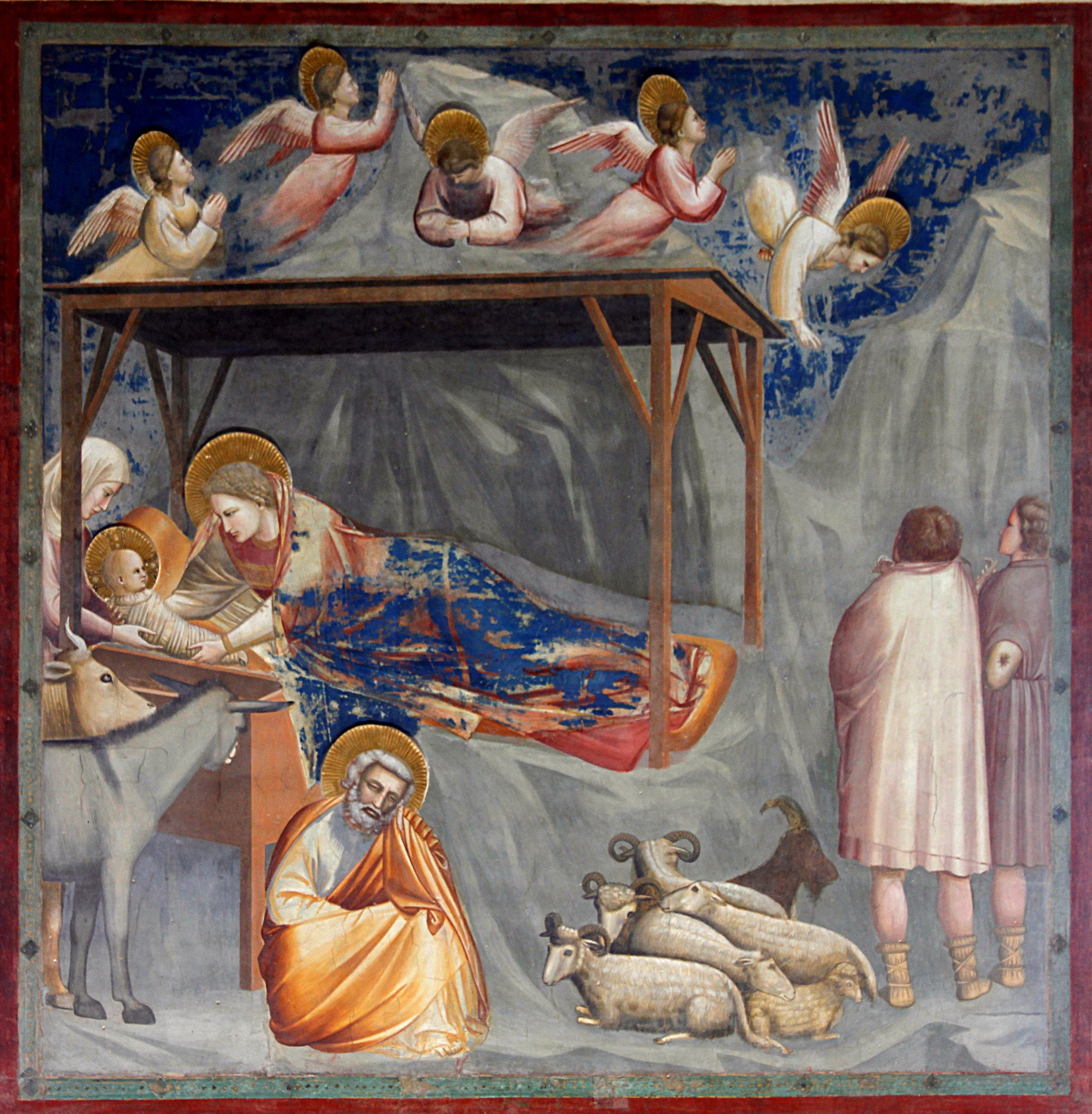
3. **The Nativity of Jesus: Birth in Bethlehem and Early Childhood Events**The birth of Jesus, a cornerstone event in Christian theology, saw Mary and Joseph undertake a journey to Bethlehem. This journey was necessitated by a decree from the Roman Emperor Augustus, which required Joseph to return to his hometown for registration in a Roman census. This imperial directive inadvertently fulfilled ancient prophecies foretelling the Messiah’s birth in Bethlehem, the city of David, Joseph’s ancestral home.
Upon their arrival in Bethlehem, Mary was due to give birth. The Gospels recount that “there was no place for them in the inn,” a detail that highlights the humble circumstances of the Nativity. Consequently, Mary gave birth to Jesus and used a manger as his cradle, a scene that has since become one of the most iconic and universally recognized images of the Christian faith. The age of Mary at the time of the Nativity is not explicitly stated in the Bible, but scholars often infer it from the typical ages for Jewish marriage, suggesting she was likely in her mid-to-late teens.
Following Jewish law, the infant Jesus was circumcised on the eighth day after his birth and given the name “Jesus” (ישוע, Yeshu’a), meaning “Yahweh is salvation.” This act affirmed his Jewish identity and his adherence to the covenant. After Mary completed the prescribed period of purification, totaling 40 days, she and Joseph brought Jesus to the Temple in Jerusalem. There, they offered the required burnt offering and sin offering, in accordance with the Law of the Lord, which mandated that “Every male that openeth the womb shall be called holy to the Lord.”
At the Temple, the family encountered Simeon and the prophetess Anna, who offered prophetic words concerning Jesus’ destiny. After these significant events, the family “returned into Galilee, to their own city Nazareth.” However, another challenge arose according to the Gospel of Matthew: magi from Eastern regions arrived in Bethlehem, worshiped Jesus, and provoked King Herod, who sought to murder the infant. Joseph was warned in a dream, leading the family to flee by night to Egypt, where they remained “for some time.” They eventually returned to Nazareth after Herod’s death, choosing Galilee over Bethlehem due to the rule of Herod’s son Archelaus in Judaea, thereby settling in the place of Mary’s original residence.

4. **Mary’s Presence During Jesus’ Public Ministry and Crucifixion**Mary’s involvement in Jesus’ adult life, particularly during his public ministry, is recorded in several poignant instances within the New Testament. One of the earliest and most significant is her presence at a wedding in Cana. It was at her suggestion that Jesus performed his first miracle, turning water into wine, thereby revealing his divine power and initiating his public ministry. This episode highlights Mary’s intimate understanding of her son and her gentle intercession, even before his full public emergence.
Subsequently, Mary is mentioned alongside Jesus’ brothers, a detail that has led to diverse interpretations across Christian traditions regarding the exact nature of their relationship. The Eastern Orthodox churches, following figures like Epiphanius, Origen, and Eusebius, hold that these “brothers” were sons of Joseph from a previous marriage, making them Jesus’ half-siblings. The official Roman Catholic position, following Jerome, interprets them as Jesus’ cousins. In contrast, the most common Protestant position, influenced by Helvidius, suggests they were full siblings of Jesus, born to Mary and Joseph after Jesus, implying Mary did not remain a perpetual virgin. These differing views underscore the theological complexities surrounding Mary’s family life.
Another notable incident during Jesus’ ministry can be interpreted as his symbolic redefinition of family. When Mary and Jesus’ brothers arrived seeking him, and he was informed they were standing outside, Jesus responded by looking at those gathered around him and saying, “These are my mother and my brothers. Whoever does the will of God is my brother, and sister, and mother.” This statement, while not a literal rejection, emphasized the spiritual kinship of believers over biological ties, highlighting the paramount importance of adherence to God’s will in his new spiritual economy.
Perhaps the most profoundly sorrowful moment of Mary’s life recorded in the Gospels is her presence at the crucifixion. She is depicted standing near the cross of Jesus, alongside Mary Magdalene, Mary of Clopas, and her own sister (whose identity is semantically ambiguous, possibly Mary of Clopas or Salome, the mother of the sons of Zebedee), as well as “the disciple whom Jesus loved.” This scene portrays Mary as a witness to her son’s ultimate suffering and sacrifice, enduring immense grief but remaining steadfast in her presence at the foot of the cross, a powerful image of maternal love and unwavering devotion.

5. **Mary After the Ascension: Her Role with the Apostles**Following the momentous events of Jesus’ crucifixion, resurrection, and ascension, Mary’s presence is briefly but significantly noted in the nascent Christian community. The Acts of the Apostles, specifically verse 14 of chapter 1, mentions Mary as the only individual other than the eleven apostles identified by name who “abode in the upper room” after Jesus’ Ascension from Mount Olivet. This detail places her firmly at the heart of the early Christian gatherings, indicating her continued spiritual importance and participation in the nascent Church.
Her presence with the apostles during Pentecost, though not explicitly stated in the biblical accounts, “has been held as a fact by Christian tradition.” This tradition implies that Mary, as the Mother of Jesus, shared in the outpouring of the Holy Spirit with the apostles, further cementing her foundational role within the foundational moments of Christianity. Her quiet yet steadfast presence underscores her significance not merely as a biological mother but as a spiritual mother to the emerging community of believers.
From this point onward, Mary largely “disappears from the biblical accounts” as the narratives shift to focus on the missionary work and growth of the early Church through the apostles. However, her presence is not entirely absent from later Christian interpretations. Catholics, for example, hold the belief that she is portrayed as the “heavenly woman” described in the Book of Revelation (Revelation 12:1, 12:5–6), an interpretation that elevates her status to a cosmic and eschatological figure within Christian theology.
While the scriptures do not record her death, various Christian traditions offer accounts of her final earthly moments and transition into heaven. Orthodox tradition, for instance, postulates her “first dying a natural death, known as the Dormition of Mary,” followed “soon after, her body itself also being assumed (taken bodily) into Heaven.” This belief in the corporeal assumption of Mary, whether at or after death, is a dogma of the Catholic Church, known as the Assumption of Mary, and is also widely believed by the Eastern Orthodox Church, Oriental Orthodox Church, and even parts of the Anglican Communion, signifying a widespread Christian consensus on her unique end.

6. **The Title “Mother of God” (Theotokos) and Its Theological Foundations**The title “Mother of God,” or *Theotokos* (Θεοτόκος, meaning “God-bearer”) in Greek, represents one of the most profound and widely accepted Marian appellations in Christian theology. This critical designation was formally recognized and affirmed at the Council of Ephesus in 431 AD, a landmark event in the early Church that addressed Christological controversies. The Council decreed that Mary is indeed the Mother of God, not because she is the source of God’s divinity, but because her son, Jesus, is one person who is both fully God and fully man, divine and human.
The theological underpinning of *Theotokos* is rooted in the doctrine of the Incarnation. It asserts that Mary bore the Son of God, who is God himself, in her womb. By giving birth to Jesus, she gave birth to the God-man, a single hypostatic union of two natures. Therefore, to deny Mary the title of Mother of God would, in effect, be to diminish the divinity of Christ or to separate his human and divine natures, which was precisely the heresy the Council of Ephesus sought to combat. This title became a bulwark for orthodox Christology.
Equivalent titles exist in other languages and traditions. In Latin, direct equivalents include *Deipara* and *Dei Genitrix*, though the phrase is more commonly and loosely translated as *Mater Dei* (“Mother of God”). Similarly, in the Greek tradition, the abbreviated form ΜΡ ΘΥ (for Μήτηρ Θεοῦ) frequently adorns her image in Byzantine icons, serving as a constant visual affirmation of this central doctrine. The Council Fathers at Ephesus explicitly stated their position, declaring that they “did not hesitate to speak of the holy Virgin as the Mother of God,” underscoring the ancient and consistent belief in this title.
The widespread acceptance of “Mother of God” across various Christian traditions highlights its fundamental importance. It is embraced by Catholics, Eastern Orthodox, Oriental Orthodox, Lutherans, Anglicans, Methodists, and even some Evangelicals. Its antiquity is further demonstrated by its appearance in the *Sub tuum praesidium*, the oldest known prayer to Mary, which dates to approximately 250 AD. This long-standing consensus on her divine motherhood distinguishes Mary as a figure of unique theological significance, underscoring her unparalleled role in the plan of salvation.
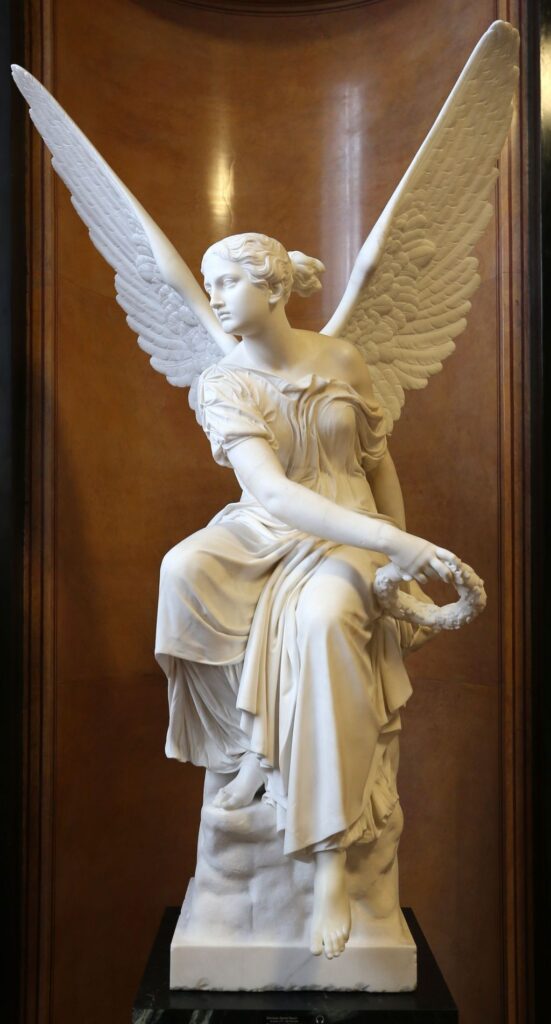
7. **The Doctrine of Perpetual Virginity: A Core Marian Belief**The doctrine of the Perpetual Virginity of Mary asserts that Mary remained a virgin throughout her entire life: *ante partum* (before birth), *in partu* (during birth), and *post partum* (after birth). This means she conceived Jesus through the action of the Holy Spirit without sexual relations, gave birth miraculously while preserving her physical virginity, and remained a virgin for the remainder of her life, making Jesus her biological and only son. This belief, often encapsulated by the Greek term *Aeiparthenos* (ἀειπάρθενος), meaning “ever-virgin,” is a significant aspect of Marian theology in several major Christian traditions.
This doctrine received formal confirmation at the Second Council of Constantinople in 553 AD, reinforcing its standing within the broader Christian understanding of Mary. It is widely accepted by Catholics, Eastern Orthodox, Oriental Orthodox, and Assyrians. Furthermore, many Lutherans and some Anglicans also adhere to this belief, signifying a broad, though not universal, consensus on Mary’s enduring virginity, which elevates her as a unique vessel for the Incarnation.
One of the scriptural phrases that has generated considerable discussion regarding Mary’s perpetual virginity is “until her son [Jesus] was born.” This phrasing, found in Matthew’s Gospel, has inspired extensive analysis on whether Joseph and Mary produced other children after Jesus’ birth. However, proponents of perpetual virginity interpret “until” as not necessarily implying a change thereafter, but rather emphasizing the status up to that point. For them, it simply means that Joseph had no marital relations with Mary *before* Jesus’ birth, without commenting on events afterward.
The question of Jesus’ “brothers” and “sisters” mentioned in the New Testament is directly addressed by this doctrine. Three main interpretations exist: the Eastern Orthodox Churches, drawing from the *Protoevangelium of James*, posit that these were Joseph’s children from a previous marriage, making him a widower when he espoused Mary. The Roman Catholic Church, following St. Jerome, understands them to be Jesus’ cousins. In contrast, some Protestants believe they were full biological siblings of Jesus, born to Mary and Joseph after Jesus. However, for those who uphold the Perpetual Virginity, these biblical references are reconciled by either the step-sibling or cousin interpretation, maintaining that Jesus was Mary’s sole biological child and that she remained a virgin throughout her life.” , “_words_section1”: “1940

8. **The Immaculate Conception: A Distinctive Catholic Dogma**Among the defining tenets of Roman Catholic Mariology is the distinctive dogma of the Immaculate Conception, which asserts that Mary was conceived without original sin. This profound belief was formally proclaimed *ex cathedra* by Pope Pius IX in 1854 through his apostolic constitution, “Ineffabilis Deus.” It stands as a pivotal declaration within Catholic teaching, separating Mary’s conception from that of all other human beings.
The Catholic Church understands that Mary, from the very first moment of her conception in her mother’s womb, was filled with grace and preserved from the stain of original sin. This unique privilege was granted to her in anticipation of her role as the Mother of God, making her a fitting vessel for the Incarnation of Jesus Christ. The Latin Church celebrates this significant event with a dedicated liturgical feast on December 8th, underscoring its central place in the liturgical calendar.
However, this dogma is not universally accepted across all Christian traditions. Orthodox Christians, for instance, explicitly reject the Immaculate Conception. Their rejection stems principally from their differing understanding of “ancestral sin” (the Greek term corresponding to the Latin “original sin”) compared to the Augustinian interpretation foundational to Catholic theology. This divergence highlights a key theological distinction between Eastern and Western Christianity regarding the nature of human sinfulness and Mary’s unique status.
Despite its specific origins within Catholicism, the doctrine’s acceptance table reveals a nuanced landscape. While it is primarily held by Catholics, some Oriental Orthodox Churches also embrace this belief. Additionally, certain segments of the Anglican Communion and some Lutherans, particularly referencing early Martin Luther’s views, have shown adherence or openness to the concept, indicating that while distinctive, its influence extends beyond purely Roman Catholic circles.
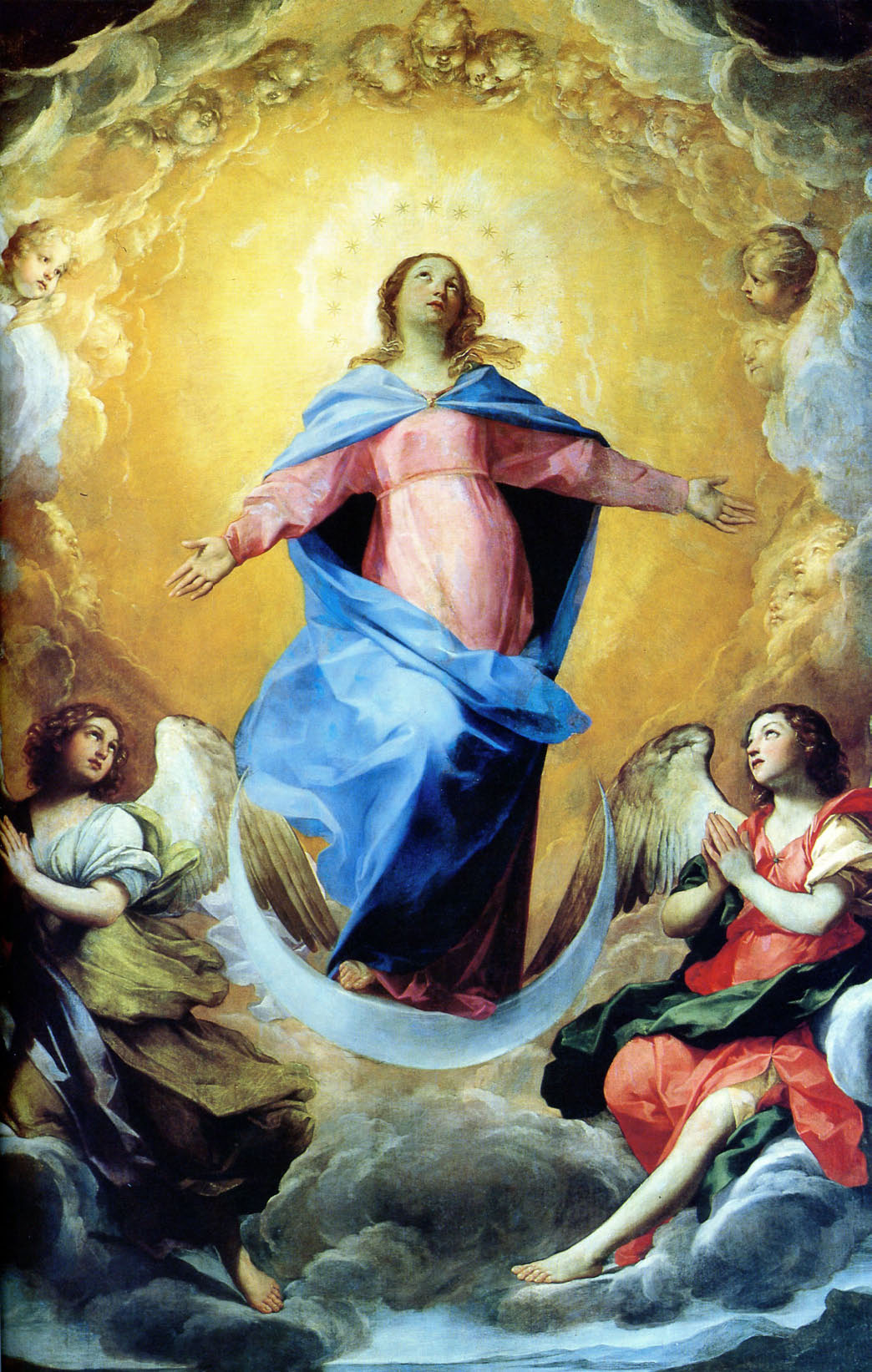
9. **The Assumption and Dormition: Accounts of Mary’s Heavenly Transition**The doctrines of the Assumption and Dormition address Mary’s final earthly moments and transition into the celestial realm. In the Roman Catholic Church, the dogma of the Assumption, defined in 1950 by Pope Pius XII in “Munificentissimus Deus,” proclaims that Mary was taken bodily into heaven either at, or before, her death. This declaration highlights a unique privilege for Mary, underscoring her singular holiness and ultimate destiny with God.
While the bodily assumption is unequivocally defined in Catholic dogma, whether Mary actually died before this assumption is not formally specified. However, “Munificentissimus Deus” references her death, implying a natural end to her earthly life is generally presumed, though not a dogma of faith. This nuance allows for various theological considerations surrounding her transition.
In Eastern Orthodox Christianity, the belief is known as the Dormition of the Theotokos. This tradition holds that Mary first experienced a natural death, her “falling asleep,” followed soon after by her body being assumed bodily into Heaven. The Eastern Orthodox Church celebrates these aspects—her death and subsequent assumption—together as a single, profound feast, emphasizing both the human reality of her passing and the divine miracle of her glorification.
This belief in Mary’s corporeal assumption is notably widespread. It is also embraced by the Oriental Orthodox Church and accepted by parts of the Anglican Communion and the Continuing Anglican movement. This broad consensus among diverse Christian traditions on Mary’s unique end speaks to the enduring reverence and theological significance attributed to her transition into heaven, solidifying her exceptional place in Christian eschatology.

10. **Marian Veneration and Devotional Practices in Catholicism**Within the Catholic Church, Mary holds a more central and exalted role in teachings and beliefs than in any other major Christian group. This emphasis is clearly demonstrated by the abundance of theological doctrines, teachings, feasts, prayers, and diverse devotional practices. The Catechism of the Catholic Church states: “The Church’s devotion to the Blessed Virgin is intrinsic to Christian worship,” highlighting her foundational place in Catholic spiritual life.
For centuries, Catholics have engaged in profound acts of consecration and entrustment to Mary, manifesting at personal, societal, and regional levels. These acts, often directed to the Virgin, to the Immaculate Heart of Mary, or to the Immaculate Conception, are understood not as diminishing the love of God, but rather as enhancing it. Catholic teachings clarify that all consecration ultimately leads to God, with Mary serving as a powerful intercessor.
The growth of Marian devotions, particularly from the 16th century onward, spurred Catholic saints to author influential works championing her veneration. Books like “Glories of Mary” and “True Devotion to Mary” underscored the spiritual benefits, teaching that “the path to Jesus is through Mary.” These devotions are sometimes linked to Christocentric devotions, emphasizing a harmonious spiritual journey.
Major Marian devotions are numerous. These include the Seven Sorrows of Mary, the recitation of the Rosary, the wearing of the scapular, devotion to the Miraculous Medal, and acts of Reparations to Mary. The months of May and October are traditionally “Marian months”; the daily rosary is encouraged in October, while May sees widespread Marian devotions. Popes have consistently issued encyclicals to encourage these practices. Catholics emphasize Mary’s roles as protector and intercessor, with the Catechism referring to her as “honored with the title ‘Mother of God’, to whose protection the faithful fly in all their dangers and needs.” Key prayers include the Ave Maria, Magnificat, and Regina caeli. Modern papal leadership has underscored the Marian focus.
Read more about: Unveiling Mary: A Global Journey Through Faith and Tradition

11. **Eastern Orthodox Traditions: Theotokos, Ever-Virgin, and Unique Devotions**Eastern Orthodox Christianity holds a wealth of traditions regarding the Ever-Virgin Mary, the Theotokos. The Orthodox steadfastly believe she remained a virgin before and after Christ’s birth. Theotokia, hymns to the Theotokos, are essential in Divine Services, giving Mary the most prominent position after Christ. She leads the order of saints, surpassing angels, and is proclaimed “Lady of the Angels.”
Orthodox perspectives on Mary are primarily doxological, embedded in worship rather than academic discourse, expressed through hymns, praise, liturgical poetry, and icon veneration. The Akathist Hymn is singularly devoted to Mary. Five of the twelve Great Feasts in Orthodoxy are dedicated to her, and the Sunday of Orthodoxy links her Mother of God identity with icon veneration. Mary is viewed as “superior to all created beings,” but explicitly not divine, thus “Saint Mary” is inappropriate.
Unlike Catholic dogma, the Orthodox do not venerate Mary as immaculately conceived, due to their distinct understanding of ancestral sin. Instead, they celebrate the Dormition of the Theotokos, commemorating her natural death followed by bodily assumption into Heaven. The extra-canonical Protoevangelium of James informs many beliefs, detailing her consecration as a virgin at the temple at age three. Theologians like John Damascene and Sergei Bulgakov (who described her as “the centre, invisible, but real, of the Apostolic Church”) have articulated Mary’s pivotal role.
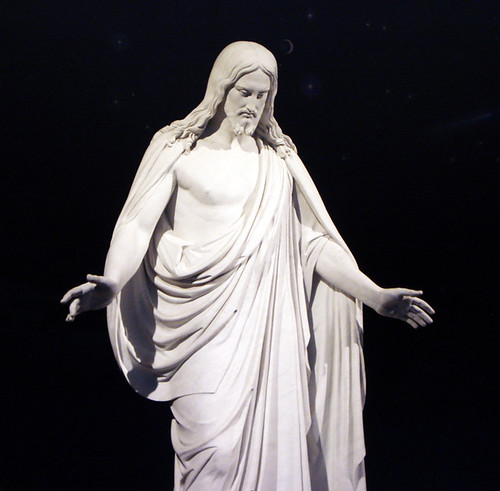
12. **Protestant Perspectives: Historical Shifts and Contemporary Views on Mary**Protestant denominations generally diverge from Catholic and Orthodox traditions in their approach to Mary, largely rejecting the veneration and invocation of saints. While Protestants acknowledge Mary as the mother of Jesus and “blessed among women,” they do not typically advocate for her veneration. Instead, Mary is often regarded as an exemplary figure, an outstanding model of a life dedicated to God, without accepting distinctive doctrines like her preservation from sin.
In early Protestantism, a nuanced reverence for Mary was evident. Martin Luther wrote that “Mary is full of grace, proclaimed to be entirely without sin.” John Calvin recognized that “God in choosing and destining Mary to be the Mother of his Son, granted her the highest honor,” though he firmly opposed the idea of Mary interceding. Huldrych Zwingli also honored Mary as the Mother of Christ, indicating initial, restrained respect among early reformers.
However, a significant shift in Protestant interest occurred over time. While early Protestants did not reject respect for Mary, they increasingly criticized Roman Catholic practices as excessive veneration. This trend intensified post-Council of Trent, as Marian veneration became distinctly Catholic, leading to a noticeable decrease in Protestant focus on Mary.
The decline continued through subsequent periods. During the Enlightenment, residual attention to Mary largely diminished in most Protestant churches, though Anglicans and Lutherans maintained some honor. In the 20th century, some Protestants reacted specifically against the Catholic dogma of the Assumption. Despite historical divergence, the Second Vatican Council fostered dialogue, hinting at potential for renewed engagement with Marian themes.

13. **Mary in Islam: Her Esteemed Position and Quranic Mentions**Maryam (Mary) holds an exceptionally esteemed position in Islam, recognized as the mother of Isa (Jesus). She is accorded the highest status among all women within the Islamic faith, a profound reverence attested by her numerous mentions in the Quran. Notably, an entire chapter of the Quran is named Sūrat Maryam, underscoring her unparalleled significance in Islamic scripture.
Maryam is honored with several distinctive titles reflecting her purity and devotion. She is often “Sayyidatuna,” meaning “Our Lady,” paralleling “Sayyiduna” for prophets. Other titles include “Siddiqah” (“she who confirms the truth”) and “Qānitah” (constant submission to God, deep absorption in prayer). She is also “Tahira” (“one who has been purified”), emphasizing her unique status as one of only two humans (the other being Jesus) untouched by Satan.
Quranic narratives describe her as “the daughter of Imran” and “the sister of Aaron” and Moses, alluding to Miriam from the Hebrew Bible. It is clarified that “the sister of Aaron” is metaphorical, a common Arabic figure of speech, explained by a Hadith from Prophet Muhammad. These accounts collectively portray Maryam as a figure of immense spiritual gravity, revered for her piety, purity, and pivotal role in the lineage of prophets.
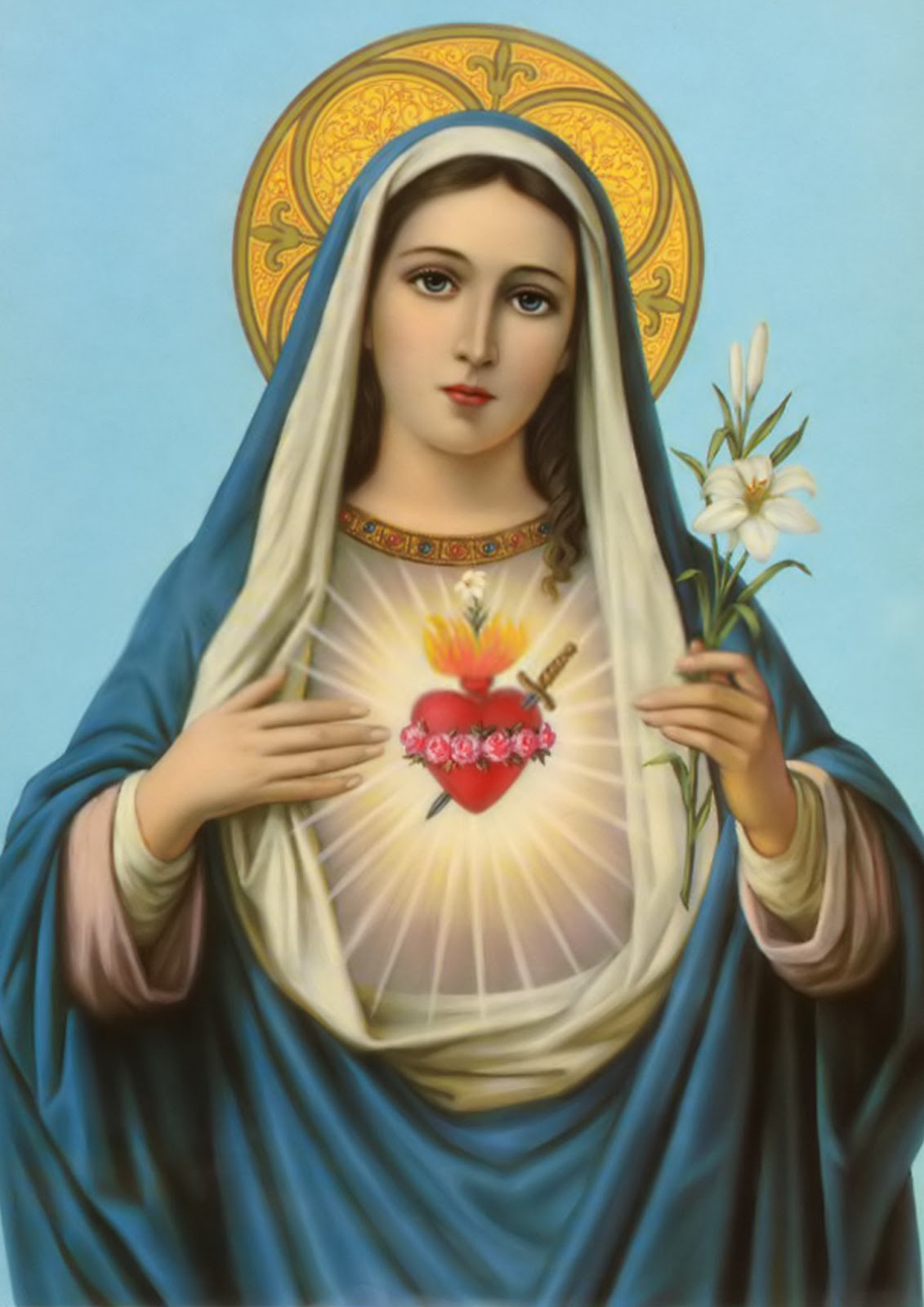
14. **Mary’s Broader Reverence: Recognition in the Baháʼí Faith and Druze Faith**Beyond the extensive theological frameworks of Christianity and Islam, Mary’s profound spiritual impact extends to other significant global faiths. She is notably revered in both the Baháʼí Faith and the Druze Faith, a testament to her universal resonance as a figure of purity, divine connection, and spiritual significance. This widespread recognition across distinct religious traditions underscores her enduring legacy, transcending specific doctrinal interpretations to touch a broader human consciousness.
While the provided context does not delve into specific doctrines or elaborate devotional practices regarding Mary within the Baháʼí or Druze faiths, the explicit mention of her reverence within these traditions is highly significant. It indicates that her life story, her role as a divinely chosen mother, and her exemplary spiritual qualities are acknowledged and held in high regard, suggesting a shared appreciation for her virtues even when theological details may differ from Christian or Islamic perspectives.
This capacity for Mary to be revered across such a diverse spectrum of beliefs solidifies her status as a uniquely unifying figure in religious history. Her presence in these distinct spiritual narratives highlights the universal human yearning for a connection to the divine through exemplary lives. Her sustained reverence in faiths like the Baháʼí and Druze traditions serves as compelling evidence of her profound and indelible mark on global spirituality, confirming her place not merely in specific religious histories but within the broader tapestry of human faith.
As our exploration of Mary’s multifaceted existence concludes, her legacy emerges as undeniably expansive, transcending singular interpretations. From Nazareth to her revered presence across diverse global faiths, Mary embodies a transcendent spiritual archetype. Her story, woven into the fabric of human belief, continues to inspire and unite, a testament to faith’s enduring power.



